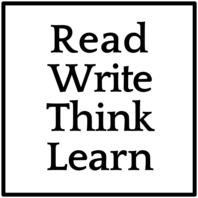We hear a lot about the need to go back-to-basics with literacy teaching in Australia (and I’m sure elsewhere), which would involve a renewed emphasis on teaching the fundamental elements of writing, such as handwriting, spelling, and the focus of my next three posts: grammar. Every speaker of English knows grammar on an implicit level (Crystal, 2004), even if they aren’t able to name and explain the grammatical forms and patterns that make up their sentences and texts. But as teachers, should we expect our students to rely on implicit knowledge of grammar when they learn to write different kinds of texts? Are there ways of teaching grammar that are proven to promote student writing development? How deep does our knowledge of grammar need to be?

Hold on… I heard somewhere there’s no evidence learning about grammar improves writing.
In the writing instruction literature, it doesn’t take long to come across claims like there’s no point teaching grammar because there’s no evidence it improves student writing. Such claims stem from studies that investigated the teaching of traditional grammatical forms in isolation, which found this makes little difference to student writing outcomes (e.g., Andrews et al., 2006; Braddock et al., 1963). This is, perhaps, unsurprising; how likely is it that knowing simple definitions of grammatical forms would meaningfully help students compose the complex texts of schooling? And yet, several other studies claim that explicit grammar teaching does enable significant gains in writing. In this situation, the ways we define and teach grammar are important considerations.
My posts over the next three weeks will outline three approaches to teaching writing that include an explicit emphasis on grammar. The first two approaches teach grammar for sentence-level writing. With a wealth of experimental and quasi-experimental studies supporting the first of these approaches, I’ve decided to tackle it in the first post. Next time, I’ll look at a second, somewhat similar, somewhat different approach. And in the third post, I’ll write about how teaching grammar as choice offers an equally compelling option, and one that may suit teaching in the Australian context even better.
Grammar for sentence-level writing
Teaching grammar for sentence-level writing is advocated most strongly by researchers in the United States (US) (e.g., Graham et al., 2018). From this view, select grammar resources are seen as the building blocks of sentences, while sentences are seen as the building blocks of texts. Advocates argue that teaching and learning grammar for sentence-level writing in the early and middle primary school years prepares students for the writing demands of upper primary, secondary, and tertiary contexts. Importantly, this view suggests that spending a lot of time understanding all the grammatical forms and functions of words and word groups is unnecessary. But an emphasis on teaching and learning certain grammatical features is still important.

What ideas underpin this view of writing and grammar?
This view of writing and grammar can be described as sociocognitive (Langer, 1991; Olson et al., 2017) in that it combines the cognitive writing processes from the work of Hayes and Flower (1980) with strong attention to the social purposes and genres of writing. This mix allows sociocognitive approaches to avoid the key criticism of process writing: that it’s too concerned with what happens in a person’s mind during writing rather than seeing writing as, fundamentally, a social act (Hyland, 2003). I’d argue that another way to describe sociocognitive approaches is as process-genre approaches (e.g., Badger & White, 2000) in that they take key ideas from both the process and genre traditions of writing instruction.
From a sociocognitive perspective, teaching children about basic grammar ideas helps them write grammatically accurate sentences with fluency, freeing up cognitive resources for other aspects of writing (Smith et al., 2021). Along with key lower-order skills (e.g., spelling, handwriting, keyboarding), this perspective views strong sentence-level writing as a necessary precursor of more complex, higher-order skills such as achieving a strong personal voice in writing and meeting specific communicative purposes for different audiences (Kubina & Yurich, 2012).
Teacher knowledge
Broadly speaking, sociocognitive approaches do not require teachers to have strong personal knowledge of how grammar works at the word-, phrase-, and clause-levels in different written genres. This lowers the bar of entry for teachers substantially. Instead, these approaches suggest that grammar should be taught in a sequence of increasing complexity for the purpose of sentence-level writing. Once students have achieved high levels of accuracy and fluency with writing simple sentences, students engage in sentence combining tasks to form compound and complex sentences. This then leads to their writing of longer and more advanced stretches of text.
OK. Give me some examples
Two sociocognitive approaches include self-regulated strategy development (SRSD) (e.g., Graham et al., 2018) and The Writing Revolution (Hochman & Wexler, 2017). I’ll focus on SRSD in this post and introduce The Writing Revolution next time.
Perhaps the most attractive feature of SRSD is its strong research backing, with more than 100 empirical studies showing its effectiveness in supporting different aspects of writing development. Given the lack of research evidence behind many (most?) popular approaches to teaching writing, this evidence should be enough to make all teachers and researchers take notice. Why not teach in the ways that have been proven to make the most difference? Let’s briefly look at the key features of SRSD.
Self-regulated strategy development
What exactly is SRSD?
In a nutshell, SRSD involves teaching students cognitive strategies to help them engage in a set of writing processes (e.g., planning, drafting, revising, editing, and publishing) (Harris & Graham, 1996). Unlike process writing approaches, the strategies in SRSD differ by the genre being written (i.e., there are specific strategies that help students write narratives, arguments, descriptions, and so on). As the name implies, SRSD also teaches students self-regulation processes, such as setting writing goals, monitoring writing progress, and reflecting on their writing performances (Collins et al., 2021). This takes the focus of SRSD beyond the written text and the processes used to write it; SRSD also considers important elements such as the writing environment and student motivation for writing. This makes SRSD quite unique. Writing is a multicomponent literate practice, and SRSD has been designed with this in mind to address the important parts.
How does SRSD work?
SRSD involves six stages that teachers and students work through in an explicit teaching process broadly similar to the gradual release of responsibility model (Pearson & Gallagher, 1983) and other explicit approaches (e.g., Rosenshine, 1995). As explained by Laud and Patel (2008) the six stages of SRSD instruction include:
Develop background knowledge
The teacher outlines background information that will help students write a specific type of text
discuss it
The teacher discusses a focus strategy and justifies its usefulness for writing
model it
The teacher models how to use the focus strategy to meet the goal of the focus genre of writing
memorise it
Students use specific mnemonics and checklists to memorise the use of the focus strategy for their own writing
support it
Students set writing goals informed by previous writing experiences and outcomes
independent writing
Students engage in independent writing without direct assistance from the teacher
While these six stages involve several elements not included in other explicit teaching approaches, at its heart, SRSD does follow the typical I do, we do, you do structure, moving from explicit teacher modelling to independent student writing. SRSD differs from other approaches, though, in its unique combined focus on genre-specific strategies, mnemonics, and self-regulation processes.
Grammar instruction as part of SRSD
With such a lot to teach, learn, and manage in SRSD (e.g., writing processes, cognitive strategies specific to different genres, self-regulation processes, peer collaboration, focus on student motivation and the writing environment…) (Peltier et al., 2021), how does grammar fit in SRSD? In short, grammar plays a crucial but limited role in SRSD.
According to world experts in SRSD, Steve Graham and colleagues (2018), teaching about the features of sentences should start in kindergarten, particularly punctuation and capital letters. In the early primary years, students should be taught about breaking down oral language ideas and descriptions into writing as a series of simple sentences. Once students have mastered simple sentence writing, they should be taught about compound and complex sentences through sentence combining strategies. All of this involves a crucial but limited explicit focus on grammar.
Offering more specificity, Smith and colleagues (2021) argued that teachers following the SRSD approach may begin by teaching basic definitions of subjects (i.e., nouns) and verbs, then teach the idea of subject-verb agreement in sentences, then help students convert sentence fragments into simple sentences, and finally help them to develop their simple sentences into longer, more complex sentences (e.g., compound and complex).
While some proponents of SRSD may suggest grammar isn’t a key feature of this approach, here are several grammatical features typically discussed in SRSD publications that should be taught using this method:
To summarise, while the SRSD studies I’ve explored focus more strongly on paragraph- and text-level strategies and mnemonics rather than word- and clause-level grammar, it is important for teachers following this approach to know and teach the basic grammatical forms listed above and how these combine in different kinds of sentences. These sentences are necessary building blocks for the texts composed through the SRSD process. The limited emphasis on grammar in SRSD means there are not too many concepts a teacher new to this approach would need to learn before getting stuck into such teaching.
Where can I learn more about SRSD?

The references mentioned at the bottom of this post offer useful starting points for learning more about SRSD. Given its research backing, SRSD is worth exploring if you value evidence-based practice.
I would also recommend having a look at the thinkSRSD website, which includes a variety of resources and offers online professional development opportunities that (in my view) are inexpensive compared to competing approaches to writing instruction.
Summarising SRSD
Where to from here
In my next post, I’ll introduce you to The Writing Revolution (Hochman & Wexler, 2017), which has become quite popular in Australian schools in the past couple of years. Like SRSD, The Writing Revolution advocates teaching grammar for sentence-level writing, but does so quite differently to SRSD, as we’ll discover next time. Then, I’ll shift my attention to a functional grammar approach that involves teaching and learning grammar as choice.
If you are a teacher, I’d love to hear about your experiences learning grammar at school, in your teacher training, and/or in your professional development in the time since. Do you think students should be taught the grammatical features of texts that are written and unpacked in school classrooms? And what do you think about SRSD? Is this something you’ve heard about before and is it something you’d like to give a go in your own practice? Please feel free to comment below or reach out to me on Twitter.
References
Andrews, R., Torgerson, C., Beverton, S., Freeman, A., Locke, T., Low, G., Robinson, A., & Zhu, D. (2006). The effect of grammar teaching on writing development. British Educational Research Journal, 32(1), 39-55.
Badger, R., & White, G. (2000). A process genre approach to teaching writing. ELT journal, 54(2), 153-160.
Braddock, R., Lloyd-Jones, R., & Schoer, L. (1963). Research in written composition. National Council of Teachers of English.
Collins, A. A., Ciullo, S., Graham, S., Sigafoos, L. L., Guerra, S., David, M., & Judd, L. (2021). Writing expository essays from social studies texts: A self‑regulated strategy development study. Reading and Writing, 34, 1623-1651. https://doi.org/10.1007/s11145-021-10157-2
Crystal, D. (2004). Rediscover grammar. Pearson Education.
Graham, S., Bollinger, A., Booth Olson, C., D’Aoust, C., MacArthur, C., McCutchen, D., & Olinghouse, N. (2018). Teaching elementary school students to be effective writers: A practice guide Teaching elementary school students to be effective writers. National Center for Education Evaluation and Regional Assistance, Institute of Education Sciences, U.S. Department of Education. http://ies.ed.gov/ncee/wwc/publications_reviews.aspx#pubsearch
Harris, K. R., & Graham, S. (1996). Making the writing process work: Strategies for composition and self-regulation (2nd ed.). Brookline Books.
Harris, K. R., & Graham, S. (2018). Self-regulated strategy development: Theoretical bases, critical instructional elements, and future research. In M. Braaksma, K. R. Harris & R. Fidalgo (Eds.), Design principles for teaching effective writing: Theoretical and empirical grounded principles (pp. 119-151). Brill Academic Publishers. https://doi.org/10.1163/9789004270480_007
Hayes, J. R., & Flower, L. S. (1980). Identifying the organization of writing processes. In L. Gregg & E. R. Steinberg (Eds.), Cognitive processes in writing (pp. 3-30). Lawrence Erlbaum.
Hochman, J. C., & Wexler, N. (2017). The writing revolution: A guide to advancing thinking through writing in all subjects and grades. Jossey-Bass.
Hyland, K. (2003). Genre-based pedagogies: A social response to process. Journal of Second Language Writing, 12, 17– 29.
Kubina, R. M., & Yurich, K. K. L. (2012). The precision teaching book. Greatness Achieved.
Langer, J. A. (1991). Literacy and schooling: A sociocognitive perspective. In E. H. Hebert (Ed.), Literacy for a diverse society: Perspectives, practices and policies (pp. 10-27). New Teachers College Press.
Laud, L. E., & Patel, P. (2008). Teach struggling writers to unite their paragraphs. TEACHING Exceptional Children Plus, 5(1). http://escholarship.bc.edu/education/tecplus/vol5/iss1/art4
Olson, C. B., Matuchniak, T., Chung, H. Q., Stumpf, R., & Farkas, G. (2017). Reducing achievement gaps in academic writing for Latinos and English learners in Grades 7– 12. Journal of Educational Psychology, 1(109), 1-21. http://dx.doi.org/10.1037/edu0000095
Pearson, P. D., & Gallagher, M. C. (1983). The instruction of reading comprehension. Contemporary Educational Psychology, 8, 317-344
Peltier, C., Garwood, J. D., McKenna, J., Peltier, T., & Sendra, J. (2021). Using the SRSD instructional approach for argumentative writing: A look across the content areas. Learning Disabilities Research & Practice. https://www.doi.org/10.1111/ldrp.12255
Rosenshine, B. (1995). Advances in research on instruction. The Journal of Educational Research, 88(5), 262-268. https://doi.org/10.1080/00220671.1995.9941309
Smith, R. A., Allen, A. A., Panos, K. L. & Ciullo, S. (2021). Sentence writing intervention for at-risk writers in upper elementary grades. Learning Disabilities Research & Practice. https://doi.org/10.1111/ldrp.12266
